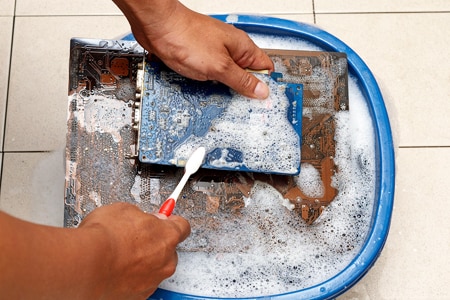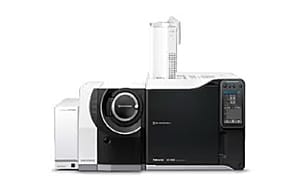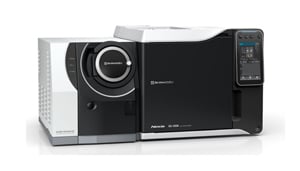Pyrolysis gas chromatography mass spectrometry (Py-GCMS) can be used to characterize most materials including insoluble and complex materials at trace levels often without any sample pretreatment e.g. polymers, plastics, rubber, paints, dyes, resins, coatings, cellulose, wood, textiles, oils etc.
PCB

Although industrial production is almost non-existent since the Stockholm Convention on Persistent Organic Pollutants in 2001, PCBs still exist in our ecosystem due to their longevity and continuous inadvertent generation. It is our responsibility to handle PCBs properly and create a cleaner environment for the future.
Application News
Analysis of PCBs and Organochlorinated Pesticides in River Water Using Simultaneous Scan/MRM Measurement in GC-MS/MS (1)
PCBs and some chlorinated pesticides are resistant to decomposition in the environment, and tend to accumulate in living organisms. As a result, they are designated as POPs (Persistent Organic Pollutants) under the Stockholm Convention. In monitoring these environmental pollutants in river water and sludge, sensitivity for the detection of trace quantities and separation from impurities in the samples become important issues. In addition, in recent years, incidents of the discharge of chemical substances have increased on a global scale, heightening demands for the identification of unanticipated pollutants in order to investigate causes and take necessary measures swiftly.
This article introduces the results of simultaneous scan/MRM measurements with respect to PCBs and chlorinated pesticides.
Analysis of PCBs and Organochlorinated Pesticides in River Water Using Simultaneous Scan/MRM Measurement in GC-MS/MS (2)
This data sheet introduces an example of the accurate quantification of PCBs and chlorinated pesticides in river water using the analytical conditions for simultaneous scan/MRM measurements introduced in Application Data Sheet No. 78.
Related Products
-
-
The Shimadzu single quadrupole GCMS-QP2020 NX gas chromatograph-mass spectrometer (GC-MS) not only boasts the best performance in its class, but also the highest efficiency.






